A Resource for Landscape Architecture Clients
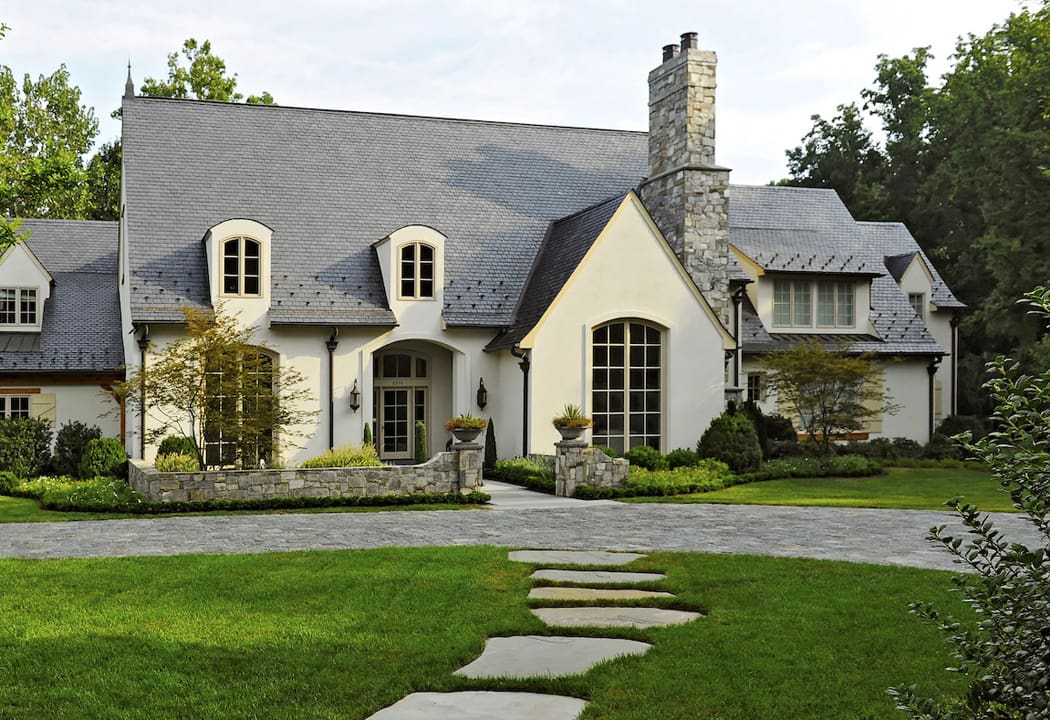
There is one stone that our landscape architects specify over and over again for their designs. It’s called Bluestone. It is a sedimentary rock, a dense form of sandstone, found only in southwestern New York State and northeastern Pennsylvania—with the most plentiful ledges in Pennsylvania. These bluestone quarries have sourced construction and landscape architecture projects in cities of the mid-Atlantic region for well over a century.
Aside from its distinctive deep blue, Pennsylvania Bluestone comes in a variety of hues that range from green, blue-gray, light purple to rusty brown. It is durable and has the strength to withstand all weather conditions. And, its fine-grained texture makes a natural non-slip surface for walkways and pool patios.
What Is Flagstone
Speaking generally and generically, bluestone is one of a half dozen different types of stone referred to as “flagstone” because of the way they are used in hardscape construction. Flagstones share a characteristic which is that they split into relatively flat segments or “flags” that can be laid in patterns for patios and walkways.
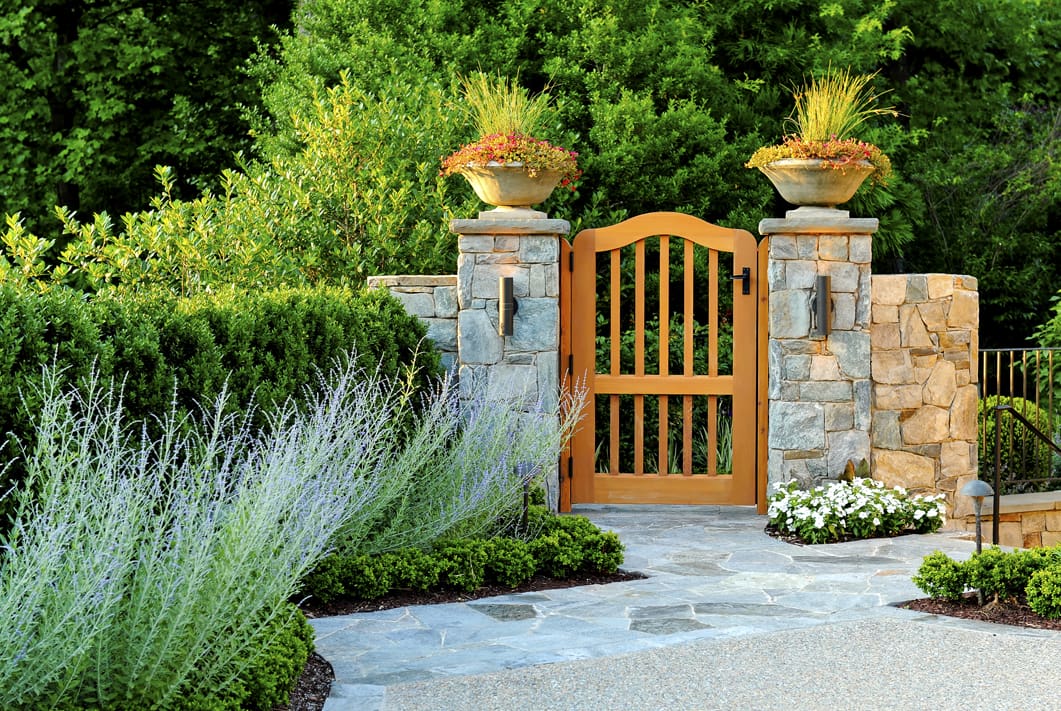
Besides bluestone, the types of flagstone most used in landscaping are:
- Travertine
- Sandstone
- Slate
- Limestone
- Quartzite
If you care for a bit more detail about the differences among these flagstone types, Landscaping Network has a flagstone comparison chart that is succinct and informative.
The Many Facets of Bluestone
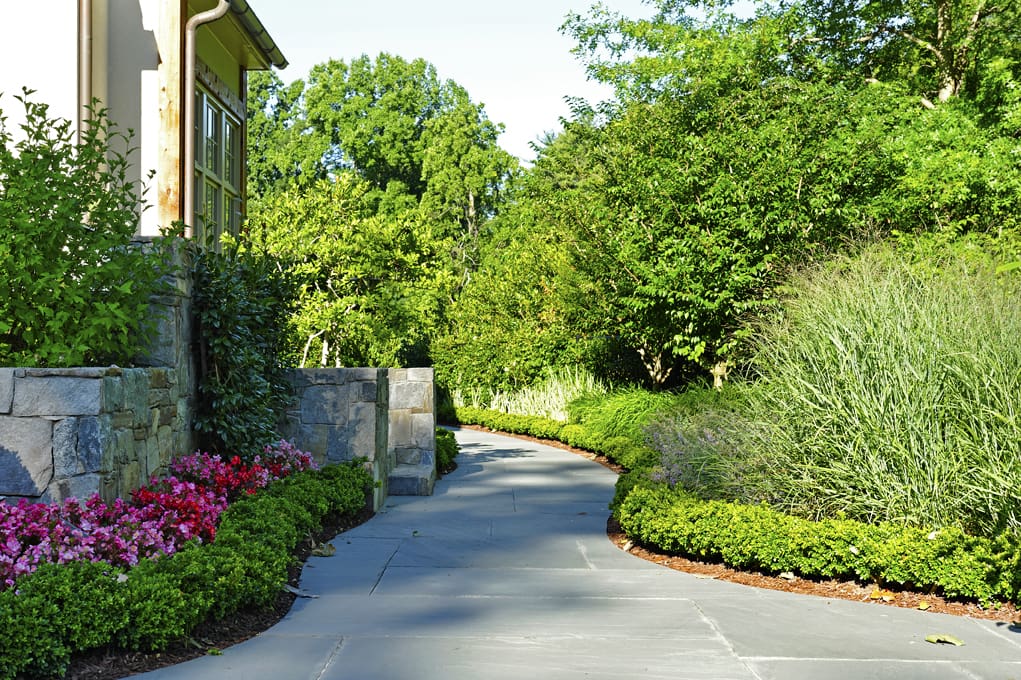 We use bluestone in our landscape designs for much more than patios and walkways. Butch Coleman of Endless Mountain Stone in Susquehanna Pennsylvania says his quarry produces about 40 different types of bluestone products that are used for:
We use bluestone in our landscape designs for much more than patios and walkways. Butch Coleman of Endless Mountain Stone in Susquehanna Pennsylvania says his quarry produces about 40 different types of bluestone products that are used for:
- pool coping & patios
- retaining walls
- wall caps
- wall cladding
- stair treads
- stepping stones for walking paths
- cobbles for driveways & arrival areas
- countertops for outdoor kitchens
- stone veneer for chimneys
- hearthstones and mantels for outdoor fireplaces
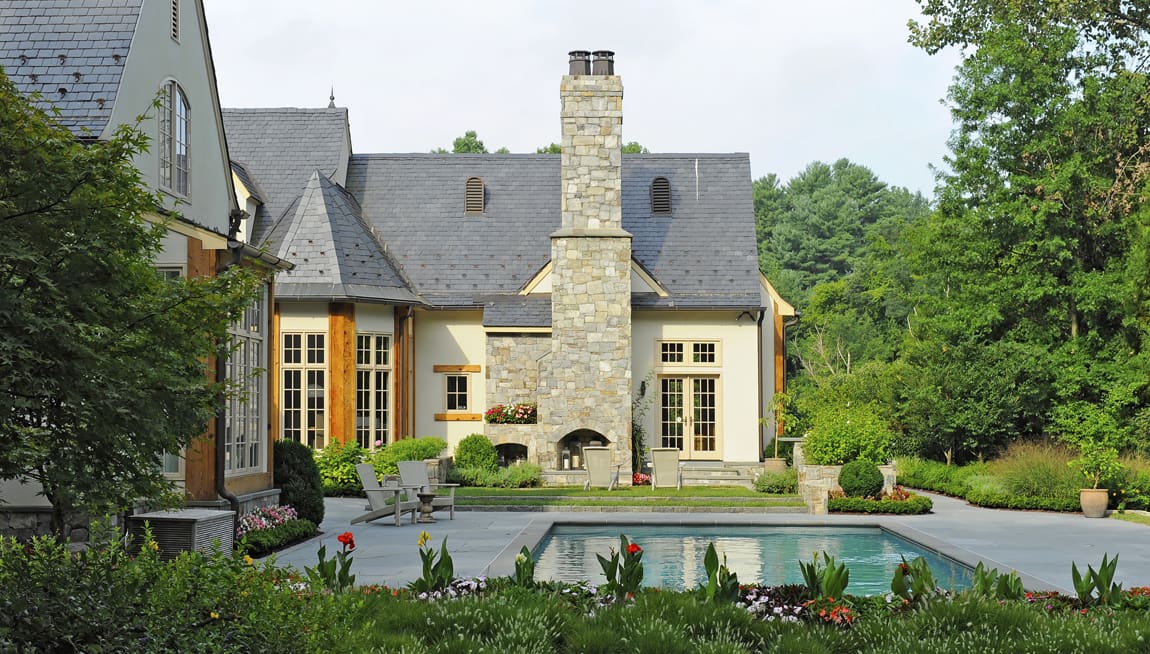
Coleman says everything is used. Even the leftovers from the stone cutting and shaping process are crushed for use as aggregate or ground cover. Nothing is wasted:
The material comes from the quarry in blocks or slabs. It gets graded from there. The first cut, is made into coping for pools, hearths and fireplace veneer. The next grade is cut for sidewalks and patios. The next grade is snapped into wall stones for retaining walls. As it starts at one end of the shop and works its way to the other, everything finds a home. All the stone gets shaped into some sort of product before we get to the end and crush it into aggregate. Butch Coleman, Endless Mountain Stone
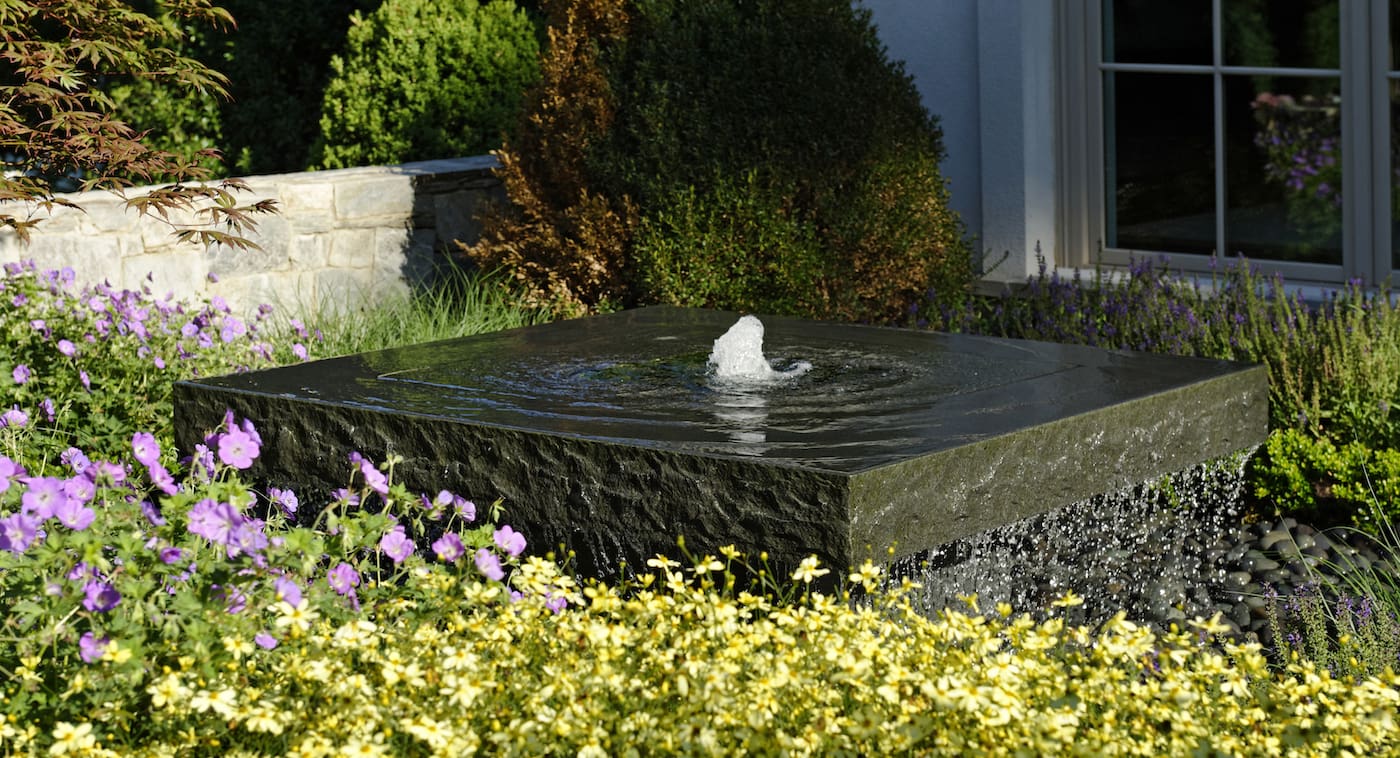
Aside from cutting stone into different shapes and products, the shop also runs the raw material through different treatments to produce a range of finishes. Tumbling is a good example. They tumble cobblestones to make them into pieces that look a hundred years old even though they are brand new. Coleman notes that running stones through the tumbling machinery is also a test of the stone’s strength beyond what it will experience in nature. So a tumbled stone product has been tested for strength and durability by the process of changing its look.
Speaking of versatility, it is worth noting that the photos used to illustrate the many uses of bluestone were all taken at the same residence in Great Falls, Virginia.
The Bluestone Quarrying Process
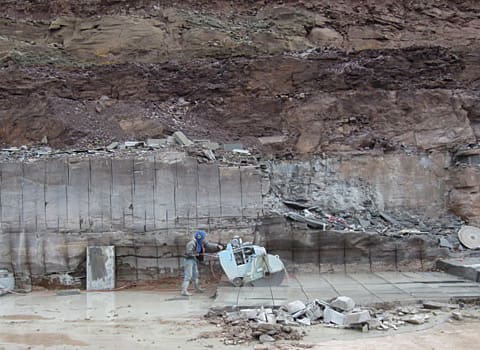
The raw stone is cut out of the quarry into cubes. Depending on the density of the stone, the cubes are treated in one of two ways to produce either “thermal” or “natural cleft” bluestone.
- Thermal. The densest raw material goes through a process called “spalling” in which the raw stone is cut along horizontal sections, soaked in water and then heated. This is called thermal flagstone and features a perfectly even finish.
- Natural Cleft. Most cubes of raw material will become natural cleft flagstone. In this process, the stone is air dried for several weeks. During this time, the bluestone will naturally separate along fissures to reveal an uneven “natural” surface.
Begin your project with a dream and a plan!
You are at the threshold of an exciting journey. This eBook will provide sound guidance as you take your first steps.
The Benefits Are Aesthetic & Practical
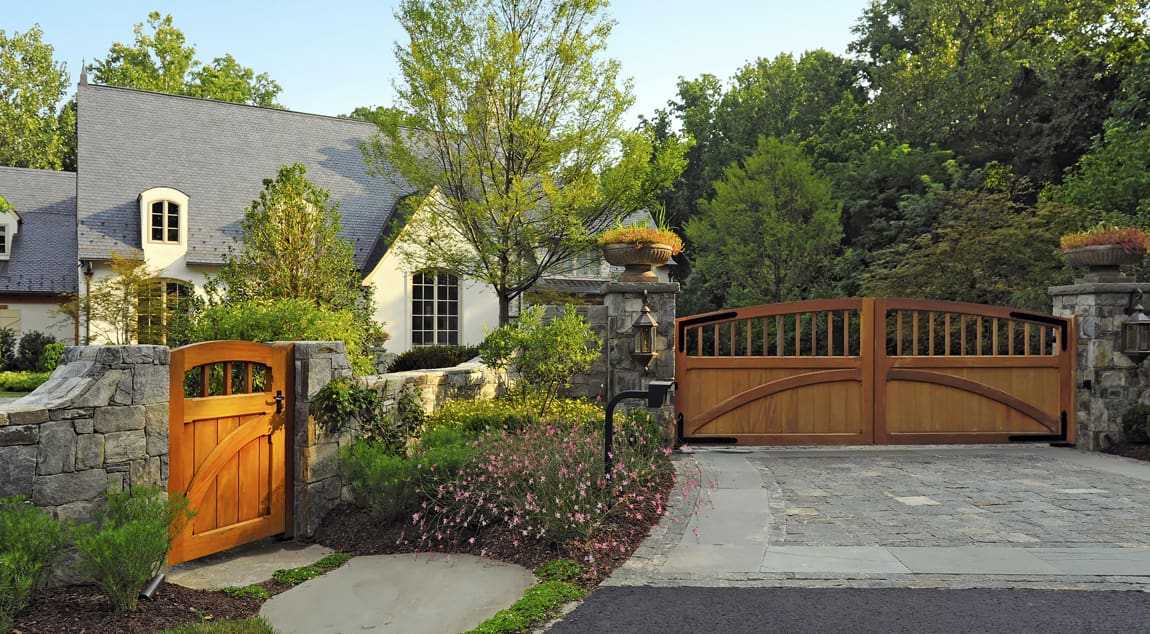
Our landscape architects favor bluestone for its aesthetic character. It provides a great palette for them to design with, due to the diversity of its shape, color and textural variations. And it isn’t just pretty. It’s tough. It stands up well to all weather conditions. It’s low maintenance and easy to repair if damaged.
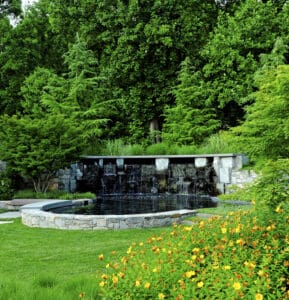 Bluestone is not your least expensive option, but we think it is worth the investment. We feel good about using bluestone for hardscaping because we know that it is going to last and continue looking great as your landscape and gardens mature over many seasons.
Bluestone is not your least expensive option, but we think it is worth the investment. We feel good about using bluestone for hardscaping because we know that it is going to last and continue looking great as your landscape and gardens mature over many seasons.
If you’ve been thinking about improving your front entry or backyard landscaping and would like to know more about your options for hardscaping, contact one of our landscape architects. We’d be happy to answer all your questions.